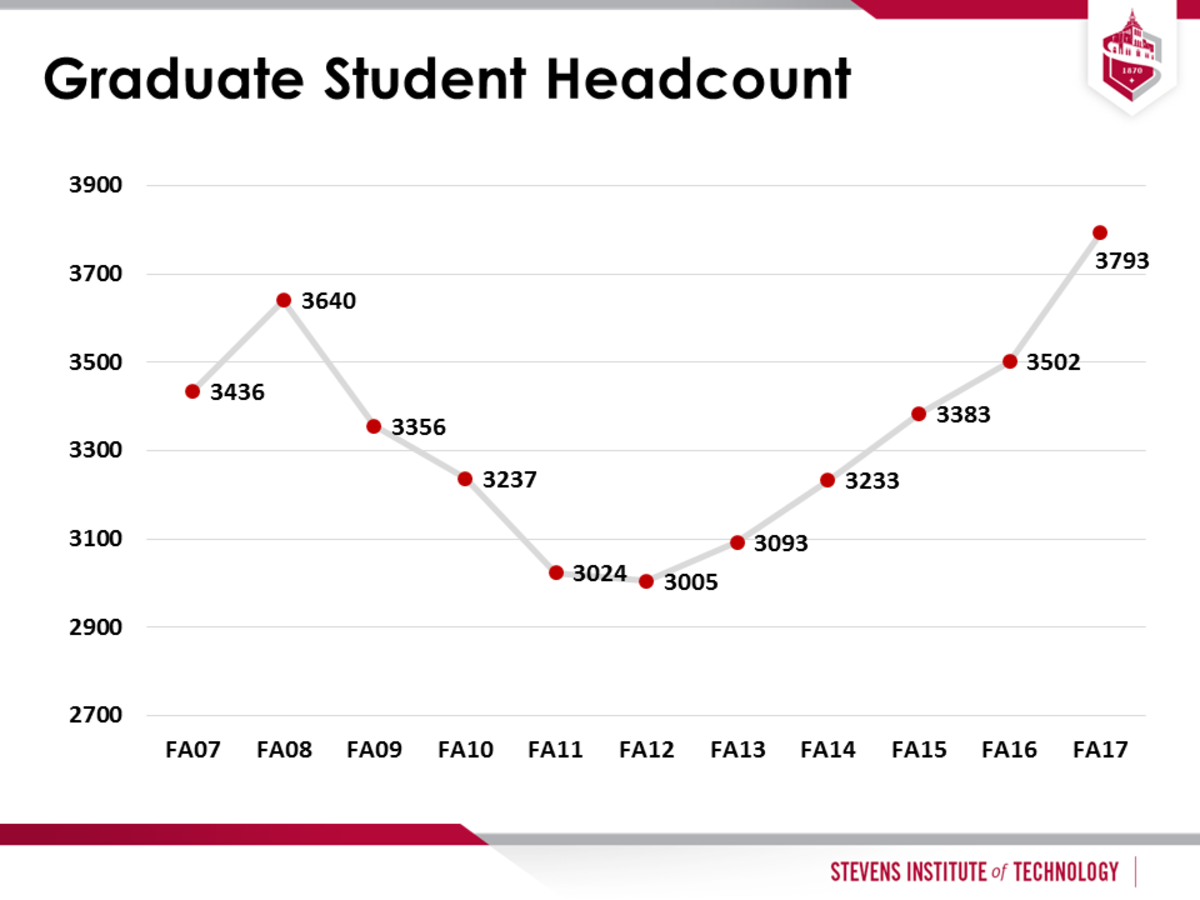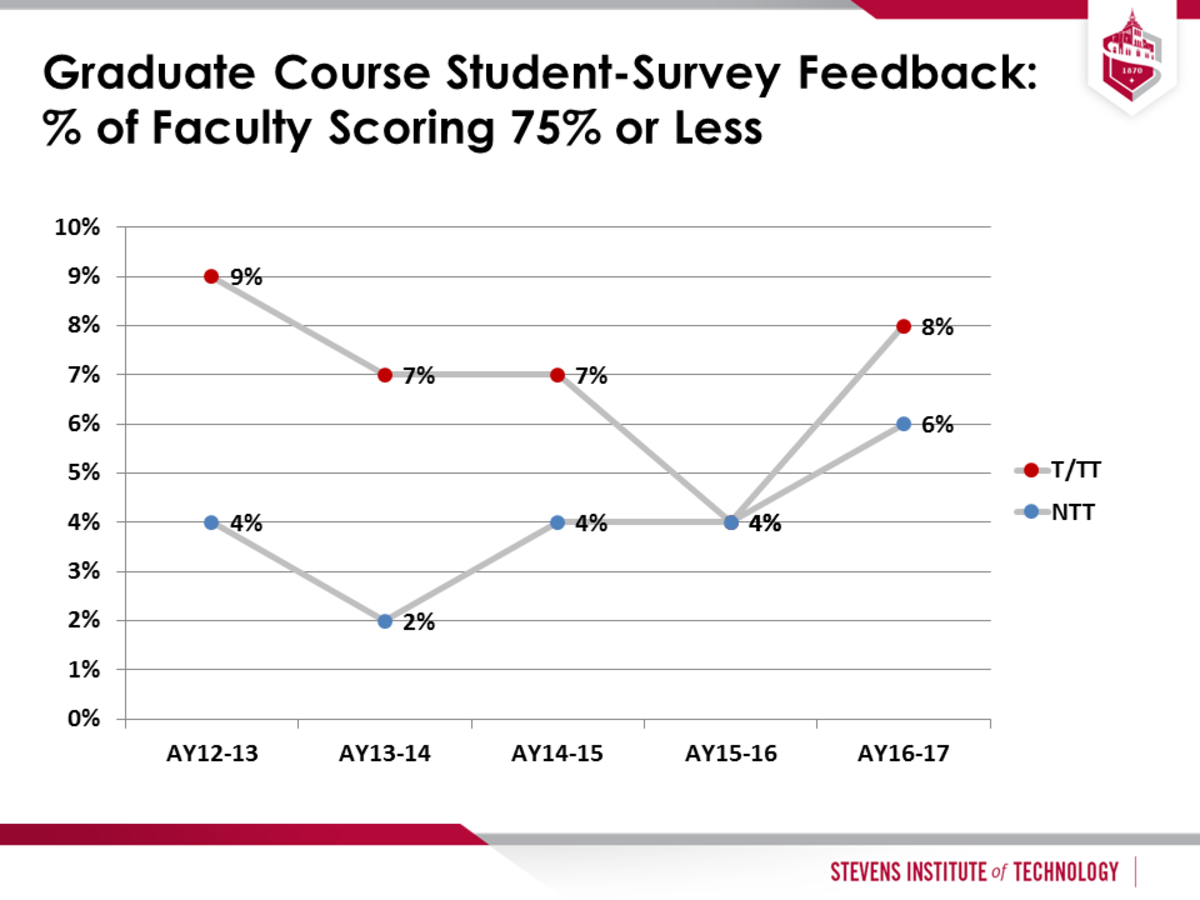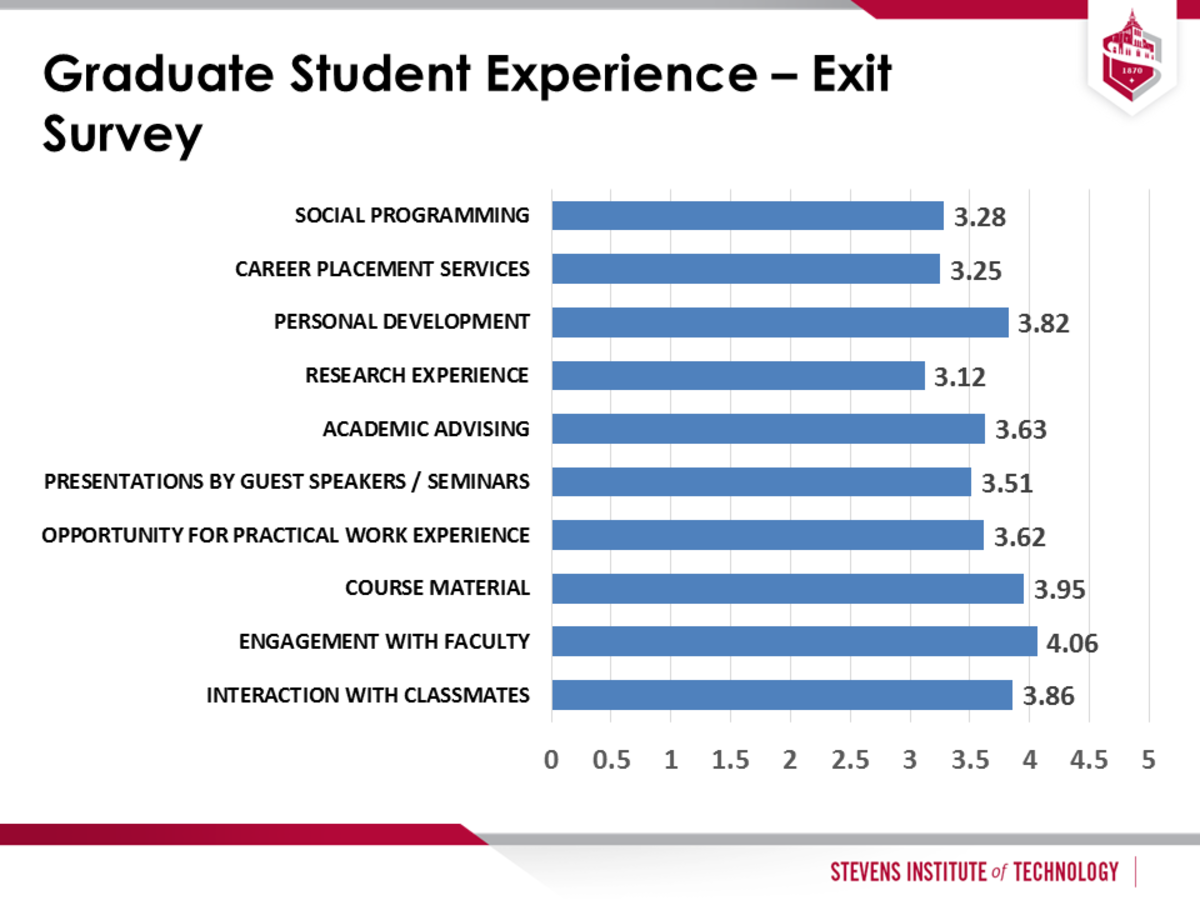Graduate student applications increased by 3.5 percent; the cohort of new graduate degree-seeking students remained nearly constant; and full-time graduate enrollment increased 9 percent over Fall 2016. Selectivity decreased by two percentage points, from 57 percent in 2016 to 59 percent in 2017. New initiatives were launched to provide additional opportunities for graduate students to engage with the faculty and other students, and graduate student feedback to exit surveys indicates effectiveness.
Goal G1
Improve the selectivity of graduate admissions from 74.2 percent in 2011 by admitting only 56 percent of applicants by 2017 and only 42 percent by 2022. Increase the number of full-time Ph.D. and master's degree students from 1,248 in Fall 2011 by 30 percent through 2022.
OWNER: PROVOST CHRISTOPHE PIERRE
The number of graduate applications increased by 3.5 percent: 7,958 in Fall 2017 vs. 7,688 in Fall 2016, and the selectivity ratio (percentage of total applicants offered admission) went up by two percentage points in 2017: 59 percent in 2017 vs. 57 percent in 2016. The cohort of new graduate degree-seeking students is 1,320 in Fall 2017, remaining nearly constant from 1,324 in Fall 2016.
The overall headcount of graduate students increased 8 percent from Fall 2016 (3,502) to Fall 2017 (3,793). Full-time graduate students increased 9 percent from Fall 2016 (2,301) to Fall 2017 (2,502) and 90 percent from Fall 2011 (1,315), while part-time students increased 7.5 percent in one year (1,201 in Fall 2016 vs. 1,291 in Fall 2017), but decreased 24 percent since Fall 2011 (1,709), in line with plans to increase the proportion of full-time graduate students.
The number of countries represented by enrolled new international graduate students in Fall 2017 was 28, compared to 25 for Fall 2016, with the majority of new students coming from two countries. Domestic students accounted for 41 percent of the Fall 2017 cohort of new graduate students, as compared to 32 percent for Fall 2016.
Goal G2
Increase the number of domestic and international corporate graduate partnerships by 3 per year over Fall 2011 (36 including 3 international) and increase the number of corporate students by 5 percent per year (YoY) through 2022.
OWNER: PROVOST CHRISTOPHE PIERRE
The number of domestic and international corporate graduate partnerships as of Fall 2017 is 38 (compared to 39 in 2016), an 8 percent increase over Fall 2011. The number of corporate (traditional semester and Y-Term) students decreased to 1,279 in AY16-17 from 1,500 in AY15-16. The former Center for Corporate & Professional Education was reorganized into the Office of Continuing & Professional Education, which includes StevensOnline. The StevensOnline initiative was launched on July 1, 2017.
Goal G3
Undertake specific initiatives to improve our graduate faculty teaching performance and student learning.
OWNER: PROVOST CHRISTOPHE PIERRE
Efforts continued to enhance teaching performance based on student feedback obtained through course evaluations, an initiative introduced in Year 3. In AY16-17, 8 percent of T and TT faculty scored below 75 percent (an average score of 3.0/4.0 or less), an increase from 4 percent in AY15-16. The corresponding figure for NTT faculty was 6 percent in AY16-17, an increase from 4 percent in AY15-16.
Goal G4
Develop and formalize mechanisms to ensure all graduate students, including part-time and off-campus students, have opportunities to engage with the Stevens community as part of their curricular studies, as well as through extra-curricular activities.
OWNER: PROVOST CHRISTOPHE PIERRE
Initiatives assessed for participation and/or impact during AY16-17 include the Graduate Enrichment Series (53 sessions, 963 attendees); Graduate Conference Funding (42 students awarded); Professional Pathways (12 sessions, 271 participants); Graduate Women’s Programs (7 sessions, 121 participants); Graduate Clubs & Organizations (24 active clubs, 105 events); Airport Pickup (502 student pick-ups); Temporary Housing (358 students, 1,823 room nights); social engagement activities and events (28 events, 1,570 participants); and Ph.D. Workshops (10 sessions, 108 participants).
New initiatives were launched during AY16-17 to provide additional opportunities for graduate students to engage with the faculty and other students:
The Graduate Student Research Conference was launched to provide students with an opportunity to communicate their research. This student-organized conference was held on campus and included 26 oral presentations and 16 poster presentations with 87 attendees.
Teaching Assistant (TA) training for doctoral students was restructured to include an in-person half-day session and 4 online modules; 65 doctoral students participated.
Conference funding was introduced to encourage doctoral students to attend and present at conferences. Funding was awarded to 18 Ph.D. students.
A Ph.D. Conference Prep Series was developed to help prepare students for conferences. These sessions focused on a variety of topics from networking to delivering an impactful presentation. Three workshop series were held, with about 25 students at each session.
At the end of each semester, the Office of Graduate Student Affairs runs an exit survey to graduating graduate students, in an effort to monitor engagement with the enrichment programs and determine their effectiveness. The results shown below indicate that students highly value (an average score of 3.8/5.0 or higher) the programs organized to increase engagement with faculty, interactions with classmates, and personal development.



